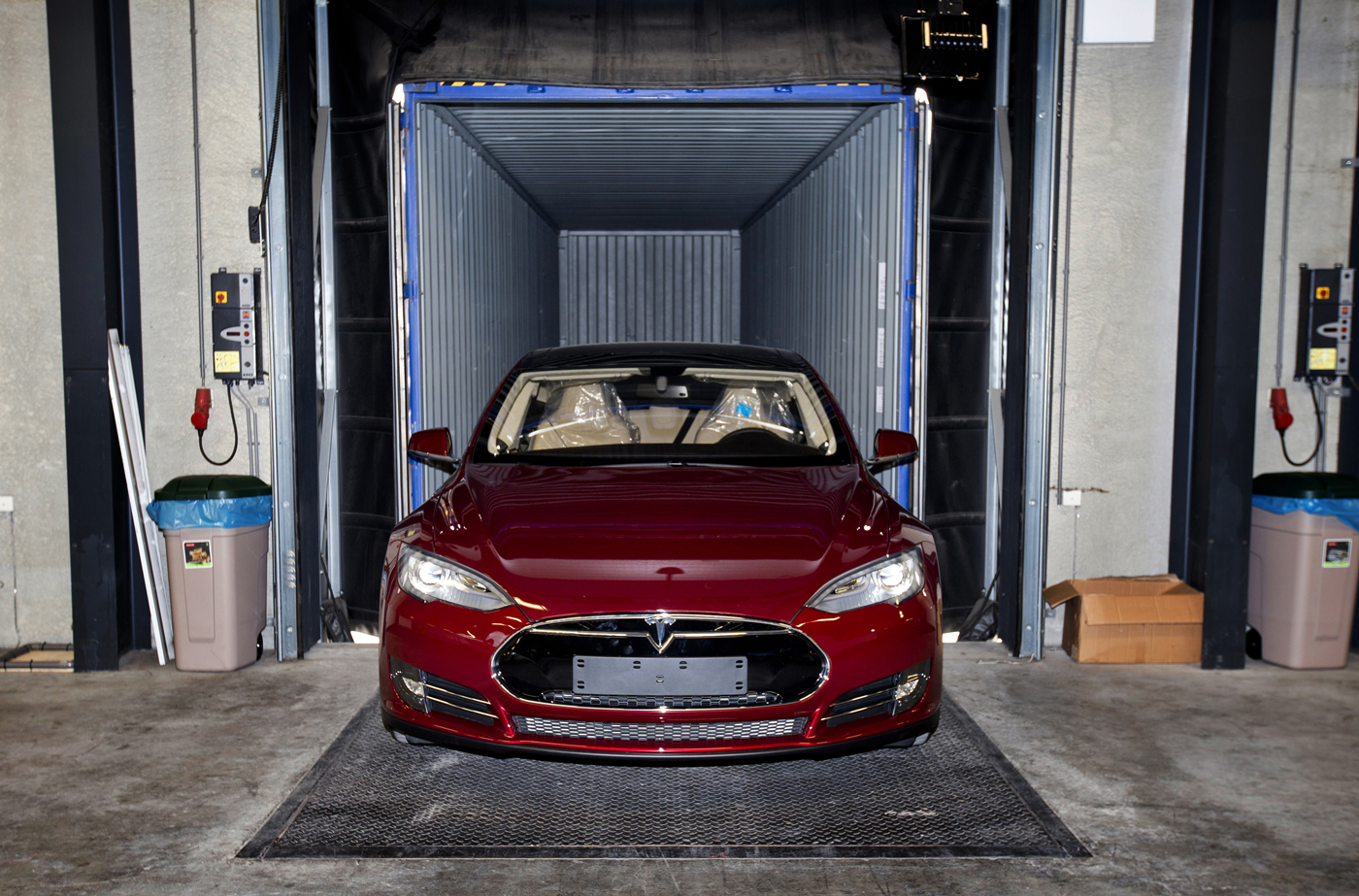What It’s Like to Be a Worker in Tesla’s Car Factory

To make an omelette, you have to break a few eggs. But what do you have to do to build the electric vehicles of the future? The Guardian has published an investigation into the working conditions inside Tesla’s gigantic auto manufacturing plant in Fremont, California, and the results are intriguing.
The piece certainly does a good job of spinning many of its interviews with factory workers to make things sound pretty grim. There’s talk of extreme working hours, collapsing employees, repetitive strain, and higher-than-average injury and illness rates.
Much of that echoes the very public comments made earlier this year by one Tesla worker, Jose Moran. He published a blog post explaining that many of the factory staff planned to try to unionize as a response to their feeling that they were “working for a company of the future under working conditions of the past.”
But hidden amid the angst in the Guardian piece are comments from other workers who feel fairly treated and well compensated. And there’s clearly a swell of pride to be had working in the factory. One worker says that having a job there is “like you died and went to auto-worker heaven,” while another feels like the organization is “changing the world.”
When Moran published his post earlier in the year, Elon Musk, the firm’s CEO, called his claims “obviously … untrue.” At the time, he argued that the company had responded to the problems its workers faced, introducing new working practices—including an extra shift—to reduce overtime by 50 percent. The Guardian reports that new data shows illness and injury rates are now 32 percent better than the industry average, too.
And at any rate, Musk has argued, Tesla staff earn equity. That bags them as much as $100,000 more than the average auto worker over a four-year period.
It’s hard to read all these very mixed messages and not compare the prospect of working in the Tesla factory to the experience of working at a startup. In fact, while it may hope to produce 500,000 cars next year, and employs thousands of people, in many respects that’s what Tesla remains. The firm is still unprofitable and arguably overvalued for its output, and it is clearly having to play a tight game.
That is, of course, no defense for troubling working standards. But the message of the Guardian article could equally be recast not as one of pure doom and gloom, but as one of a company still learning its way in the sector, correcting its early mistakes, and trying to do its best by its staff and the environment. The truth is probably somewhere in between.
(Read more: The Guardian, “Building Tesla” “Tesla’s Next Broken Promise”)
Keep Reading
Most Popular
Large language models can do jaw-dropping things. But nobody knows exactly why.
And that's a problem. Figuring it out is one of the biggest scientific puzzles of our time and a crucial step towards controlling more powerful future models.
The problem with plug-in hybrids? Their drivers.
Plug-in hybrids are often sold as a transition to EVs, but new data from Europe shows we’re still underestimating the emissions they produce.
Google DeepMind’s new generative model makes Super Mario–like games from scratch
Genie learns how to control games by watching hours and hours of video. It could help train next-gen robots too.
How scientists traced a mysterious covid case back to six toilets
When wastewater surveillance turns into a hunt for a single infected individual, the ethics get tricky.
Stay connected
Get the latest updates from
MIT Technology Review
Discover special offers, top stories, upcoming events, and more.